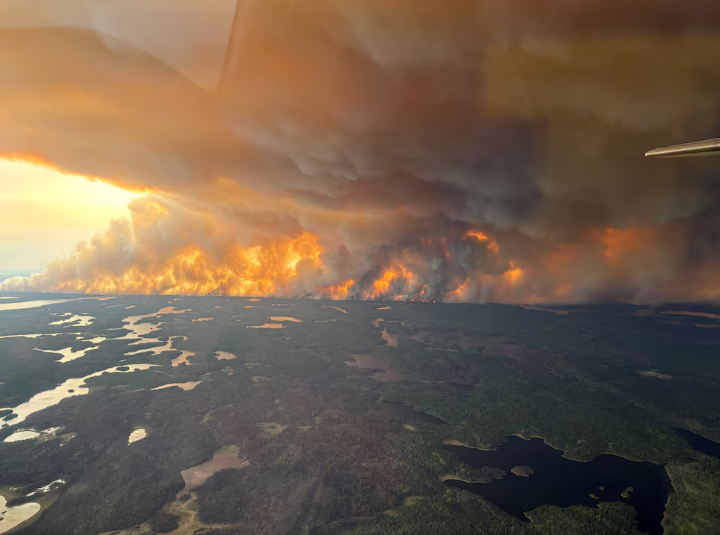Manitoba has declared a state of emergency as intense wildfires sweep across northern and eastern regions of the province, triggering the largest evacuation effort in recent memory. Premier Wab Kinew announced on Wednesday that an estimated 17,000 residents must evacuate immediately, with the city of Flin Flon among the most affected areas.
“This is the largest evacuation in many Manitobans’ living memory,” Kinew said during a news conference. “It requires an all-hands-on-deck response involving local, provincial, and federal resources.”
Evacuation centers are being rapidly set up in cities like Winnipeg, where soccer fields and community centers are being converted into temporary shelters. The federal armed forces have been deployed to assist in the evacuation and relocation of residents, providing logistical support and transportation.
The fire in Manitoba, identified as wildfire WE024, has already prompted pre-evacuation warnings in several areas. Images show thick smoke billowing into the sky as emergency crews battle to contain the blaze.
Meanwhile, the wildfire crisis extends beyond Manitoba. In neighboring Alberta, several blazes have broken out, disrupting oil and gas operations and prompting evacuations in remote communities.Cenovus Energy, one of Canada’s top oil producers, has pulled nonessential staff from its Foster Creek facility in northern Alberta. The site is located in the Bonnyville-Cold Lake region — a key oil sands area that’s now threatened by wildfires stretching across 2,900 hectares near Chipewyan Lake.
Although Chipewyan Lake is not currently in the direct path of the fire, residents have been placed on one-hour evacuation notice due to the risk of changing wind conditions.

Further north in Alberta, a 1,600-hectare wildfire is burning uncontrollably near Swan Hills. The town’s 1,200 residents were ordered to evacuate earlier in the week, and energy company Aspenleaf Energy has suspended its operations as a precaution, shutting in around 4,000 barrels of oil equivalent per day.
As Canada braces for more extreme fire weather conditions driven by climate change, the joint response of governments, military, and energy companies highlights the scale and urgency of the crisis.
Authorities urge residents in affected areas to remain alert, follow evacuation orders, and monitor official updates. With fires continuing to burn across western and central Canada, emergency responders are racing against time to save lives and protect critical infrastructure.



